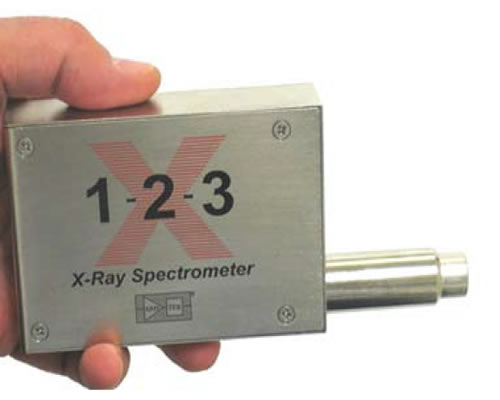

X-Ray Detector and Preamplifier
Digital Pulse Processor and MCA
Power Supply and Interface with PC

Detailed performance depends on detector and configuration, which can be optimized for specific applications.
The X-123 represents the culmination of 14 years of X-ray detector development at Amptek. Our philosophy has always been to create small, low power, high performance instruments while keeping them simple to operate. The X-123 exemplifies this philosophy by providing in a single package the XR-100 Detector and its Charge Sensitive Preamplifier; the DP5 Digital Pulse Processor with pulse shaper, MCA, and interface; and the PC5 Power Supply. All that is needed is a 5 Volts DC input and a USB or RS232 connection to your computer.
| System Performance | |||||||||||||||||||||||||||||||||||||
| Energy Resolution | 145 to 260 eV FWHM @ 5.9 keV. Depends on detector, peaking time, and temperature. | ||||||||||||||||||||||||||||||||||||
| Energy Range | Efficiency is >25% for X-rays from 1.5 to 25 keV. May be used outside this range with lower efficiency. | ||||||||||||||||||||||||||||||||||||
| Maximum Count Rate Depends on peaking time. Recommended maxima for 50% dead time with pile-up rejection enabled are shown below:
|
|||||||||||||||||||||||||||||||||||||
| Detector And Preamplifier | |||||||||||||||||||||||||||||||||||||
| Detector Type | Si-PIN, SDD or CdTe | ||||||||||||||||||||||||||||||||||||
| Detector Size | 6 mm2 to 25 mm2 | ||||||||||||||||||||||||||||||||||||
| Silicon Thickness | 300 μs and 500 mm | ||||||||||||||||||||||||||||||||||||
| Be Window Thickness | 1 mil (25 mm) or 0.5 mil (12.5 mm) | ||||||||||||||||||||||||||||||||||||
| Collimator | Multilayer | ||||||||||||||||||||||||||||||||||||
| Thermoelectric Cooler | 2-stage | ||||||||||||||||||||||||||||||||||||
| Preamplifier Type | Amptek custom design with reset through HV connection. | ||||||||||||||||||||||||||||||||||||
| Pulse Processor | |||||||||||||||||||||||||||||||||||||
| Gain | Combination of coarse and fine gain yields overall gain continuously adjustable from 0.84 to 127.5 | ||||||||||||||||||||||||||||||||||||
| Coarse Gain | Software selectable settings from 1.12 to 102 in 16 log steps. 1.12, 2.49, 3.78, 5.26, 6.56, 8.39, 10.10, 11.31, 14.56, 17.77, 22.42, 30.83, 38.18, 47.47, 66.26, 102.0 | ||||||||||||||||||||||||||||||||||||
| Fine Gain | Software selectable, 0.75 to 1.25, 10 bit resolution | ||||||||||||||||||||||||||||||||||||
| Full Scale | 1000 mV input pulse @ x1 gain | ||||||||||||||||||||||||||||||||||||
| Gain Stability | <20 ppm / °C (typical) | ||||||||||||||||||||||||||||||||||||
| Pulse Shape | Trapezoidal | ||||||||||||||||||||||||||||||||||||
| Peaking Time | 24 software selectable peaking times between 0.8 and 102 ms, approximately log spaced, corresponding to semi-gaussian shaping times of 0.4 to 45 ms. | ||||||||||||||||||||||||||||||||||||
| Dead Time | Total dead time is 1.05 times the peaking time. No conversion time. | ||||||||||||||||||||||||||||||||||||
| Fast Channel Pulse Pair Resolving Time | 120 ns | ||||||||||||||||||||||||||||||||||||
| MCA | |||||||||||||||||||||||||||||||||||||
| Number of Channels | Commandable to 8k, 4k, 2k, 1k, 0.5k, or 0.25k channels | ||||||||||||||||||||||||||||||||||||
| Presets | Time, total counts, counts in an ROI, counts in a channel | ||||||||||||||||||||||||||||||||||||
| Communications | |||||||||||||||||||||||||||||||||||||
| USB | 2.0 full-speed (12 Mbps) | ||||||||||||||||||||||||||||||||||||
| Serial | Standard RS232 at 115.2 k or 57.6 Kbaud | ||||||||||||||||||||||||||||||||||||
| Ethernet | 10 base-T | ||||||||||||||||||||||||||||||||||||
| Power | |||||||||||||||||||||||||||||||||||||
| Nominal Input | +5 VDC at 500 mA (2.5 W) (typical). Current depends stronly on detector ΔT. Ranges from 300 to 800 mA at 5 VDC. AC adapter provided. | ||||||||||||||||||||||||||||||||||||
| Input Range | 4 V to 6 V (300 to 200 mA, 500 mA max)) | ||||||||||||||||||||||||||||||||||||
| High Voltage Supply | Internal multiplier, adjustable to 400 V | ||||||||||||||||||||||||||||||||||||
| Cooler Supply | Closed loop controller with ΔTmax = 85°C | ||||||||||||||||||||||||||||||||||||
| General and Environmental | |||||||||||||||||||||||||||||||||||||
| Operating Temperature | -20 °C to +50 °C | ||||||||||||||||||||||||||||||||||||
| Warranty Period | 1 year | ||||||||||||||||||||||||||||||||||||
| Typical Device Lifetime | 5 to 10 years, depending on use | ||||||||||||||||||||||||||||||||||||
| Storage and Shipping | Typical: -20 °C to +50 °C, 10 to 90% humidity noncondensing Long-term storage: 10+ years in dry environment |
||||||||||||||||||||||||||||||||||||
| Compliance | RoHS Compliant | ||||||||||||||||||||||||||||||||||||
| Connectors | |||||||||||||||||||||||||||||||||||||
| USB | Standard USB Mini jack | ||||||||||||||||||||||||||||||||||||
RS232: Standard 2.5 mm stereo audio jack
|
|||||||||||||||||||||||||||||||||||||
| Ethernet | Standard Ethernet connector (RJ-45) | ||||||||||||||||||||||||||||||||||||
| Power | Hirose MQ172-3PA(55), Mating plug: MQ172-3SA-CV | ||||||||||||||||||||||||||||||||||||
Auxiliary
2 x 8 16-pin 2 mm spacing (Samtec part number ASP- 135096-01). Mates with cable assembly (Samtec P/N TCMD-08-S-XX.XX-01). Top row odd pins, bottom row even pins. Top right pin = 1, bottom right pin = 2. |
|||||||||||||||||||||||||||||||||||||
| Interface Software | |||||||||||||||||||||||||||||||||||||
| ADMCA: The X-123 can be controlled by the Amptek ADMCA display and acquisition software. This software completely controls and configures the X-123, and downloads and displays the data. It and supports regions of interest (ROI), calibrations, peak searching, and so on. The ADMCA software includes a seamless interface to the XRF-FP quantitative X-ray analysis software package. Runs under Windows 98SE or later (32- bit only) on PC compatible computers. Windows XP PRO SP2 or later recommended. | |||||||||||||||||||||||||||||||||||||
| DPP API: The X-123 comes with an Application Programming Interface (API) in the form of a DLL library. The user can use this library to easily write custom code to control the X-123 for custom applications or to interface it to a larger system. Examples are provided in VB, VC++, etc. on how to use the API. A Window CE/Pocket PC version is also provided. | |||||||||||||||||||||||||||||||||||||
| VB Demonstration: The VB demonstration software runs on a personal computer and permits the user to set the X-123 parameters, to start and stop data acquisition, and to save data files. It is provided with source code and can be modified by the user. This software is intended as an example of how to manually control the X-123 through either the USB or RS-232 interface using the most basic calls without the DPP API. This is primarily needed as an example when writing software for non-Windows platforms. | |||||||||||||||||||||||||||||||||||||
Amptek’s specialty is X-ray spectrometers, which are small, low power, high performance, and simple to operate. The X123 combines in a single package Amptek’s standard, high performance X-ray spectroscopy components: the XR-100CR detector and preamplifier, DP5 digital pulse processor and MCA, and PC5 power supply. The result is a complete integrated system which can fit in your hand. In many commercially available systems, the preamplifier alone has more size, mass, and power than this integrated system. It requires only 2 connections to run: +5 VDC power and a standard RS- 232 or USB bus. With the X-123, anyone can rapidly obtain high quality X-ray spectra.
The typical detector is a Si-PIN photodiode: X-rays interacting in the silicon create an average of one electron/hole pair for every 3.62 eV of energy lost in the silicon, which is the input signal.
The detector is mounted on a thermoelectric cooler along with the input FET and coupled to a custom charge sensitive preamplifier. The thermoelectric cooler reduces the electronic noise in the detector and preamplifier, but the cooling is transparent to the user: it operates like a room temperature system. The charge-sensitive preamplifier uses a novel feedback technique, injecting reset pulses through the high voltage connection to the detector.
The pulse processor is the DP5, a digital pulse processor which replaces both the shaping amplifier and multichannel analyzer (MCA) found in most analog systems. The use of digital technology improves several key parameters: (1) better performance, specifically better resolution and operation at higher count rates; (2) greater flexibility since more configuration options are available and they are selected by software over a RS-232 interface, and (3) improved stability and reproducibility. The DP5 digitizes the preamplifier output, applies real-time digital processing to the signal, detects the peak amplitude (digitally), and bins this value in its histogramming memory, generating an energy spectrum. The spectrum is then transmitted over the DP5’s interface to the user’s computer. The Amptek DP5 has 6 main function blocks to implement these functions: (1) an analog prefilter; (2) an ADC; (3) a digital pulse shaper; (4) pulse selection logic; (5) histogram logic, and (6) interfacing hardware (which includes a microcontroller) and software.
The power supply is Amptek’s PC5, a single board. The input is approximately +5 VDC with a current of about 200 mA. The PC5 uses switching supplies to produce all the low voltages required for the digital processor and the preamplifier. It also includes a high voltage multiplier to produce the detector bias voltage, up to 400 V, and supply for the thermoelectric cooler which provides closed loop control with a maximum temperature differential of 85˚C. Both of these supplies are adjusted at the factory for a particular detector.
The complete system is packaged in 7 x 10 x 2.5 cm3 aluminum box, with the detector mounted on an extender. In its standard configuration, only two connections are required: power (+5 VDC) and serial (either USB or RS232). The DP5 board supports several additional inputs and outputs, if the X123 will be integrated with other equipment. This includes an MCA gate, a memory buffer select signal, timing outputs, and SCA ouputs. Please contact Amptek Inc. or see the DP5 specifications for further information.
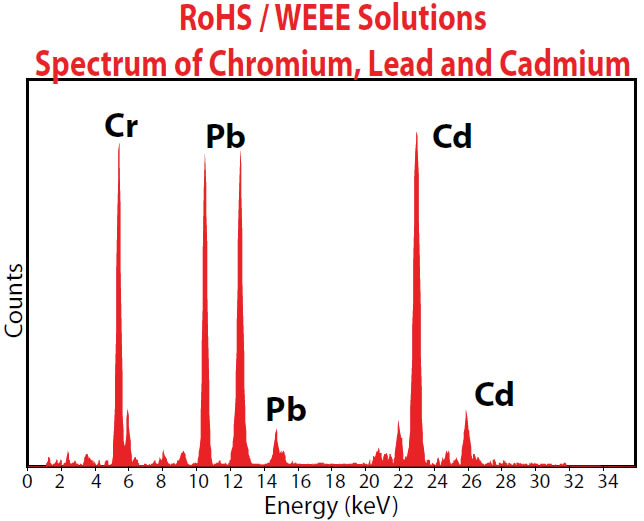
The RoHS / WEEE directive requires the electronics industry to certify that products comply with maximum concentration amounts of particular elements and compounds (Cr VI, Pb, Cd, Hg, Br PBB/PBDE) by July 2006. The X-123 provides OEMs and end users with a powerful X-Ray Spectrometer system in one convenient, small, easy to use instrument that can be quickly implemented to minimize time to market. No additional engineering is required on the spectrometer end since all the connections have been made internally. All that is needed is a +5 Volts DC input power and a USB or RS232 connection to a computer.
The X-123 does not sacrifice performance for size. The resolution for the 5.9 keV peak of 55Fe is 145 eV FWHM to 260 eV FWHM depending on detector type and shaping time constant. Since the X-123 is a complete packaged spectrometer, it is the perfect choice for fast-track product development and will provide the OEM with the quickest time to market.
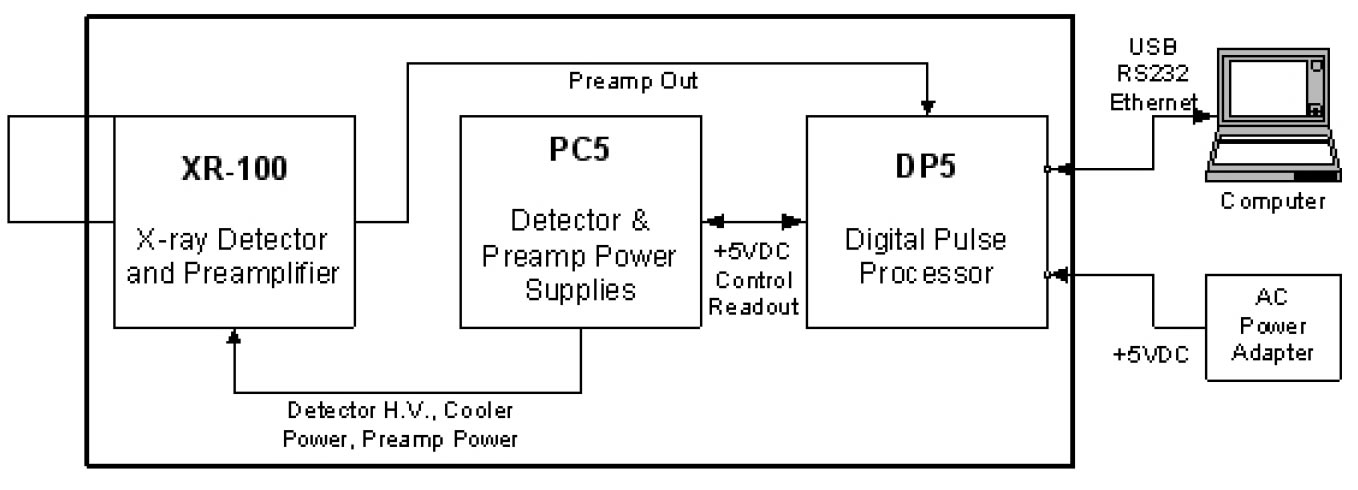
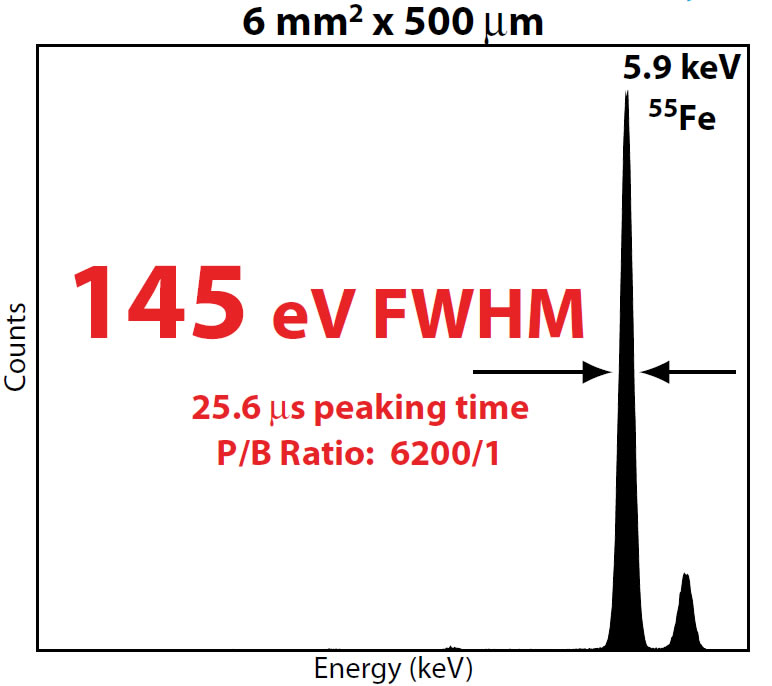
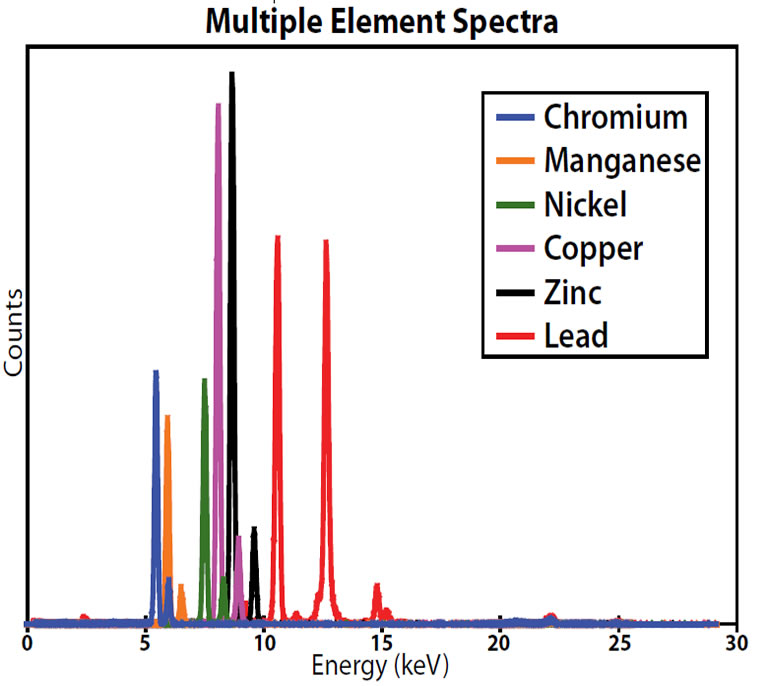
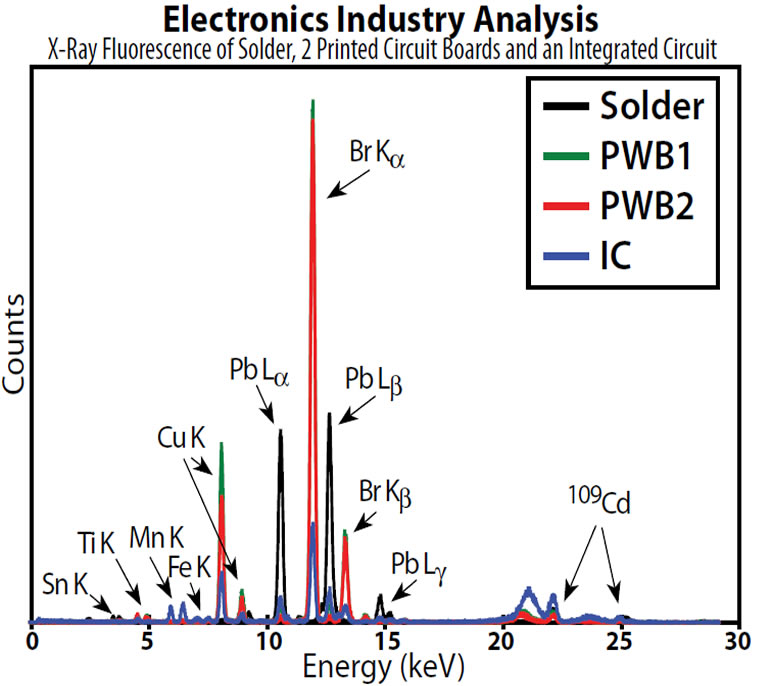
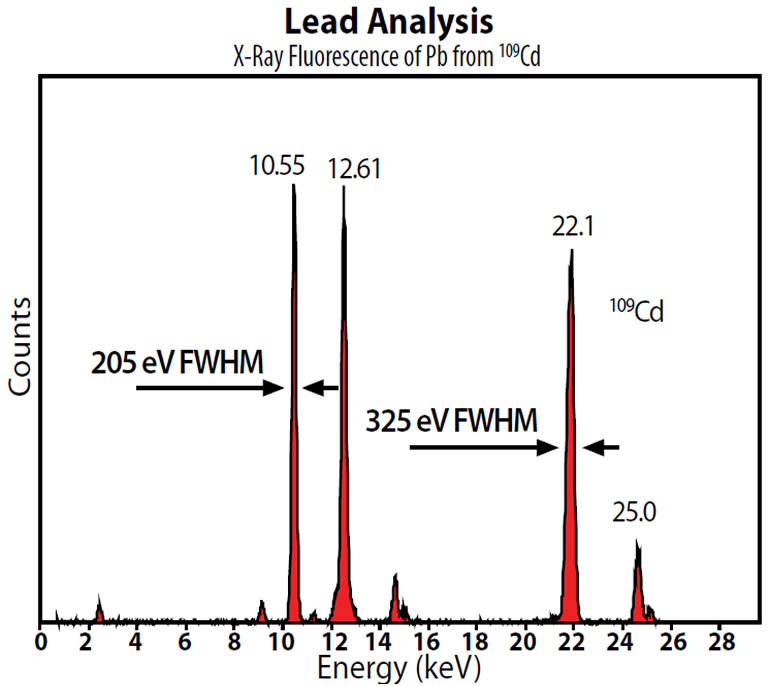
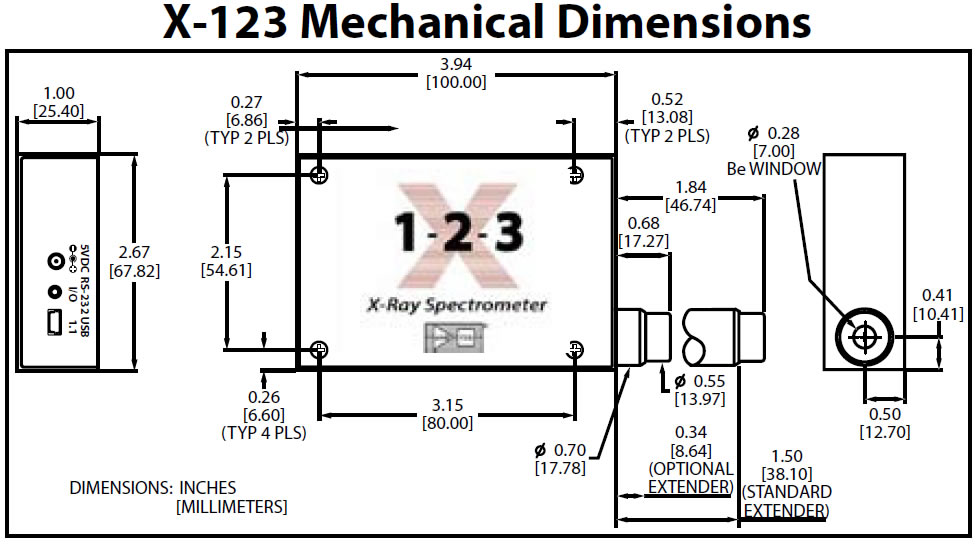

Copyright © 2024 www.xscientific.tech
All rights reserved.